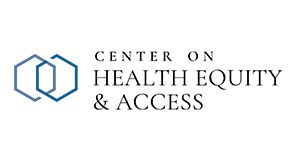Unmet Health Care and Health-Related Social Needs of Laundromat Users
The intersection of healthcare and socioeconomic factors often reveals significant disparities, particularly among vulnerable populations. A recent study highlighted the unmet health care and health-related social needs (HRSNs) of laundromat users in Pennsylvania, showcasing alarming statistics. About 52.9% of surveyed participants were Medicaid enrollees, with findings indicating that unmet HRSNs—such as food insecurity and utility issues—were more prevalent than unmet health care needs. This is a critical insight, as it underscores the complex realities faced by individuals who rely on laundromat services, often linked to broader socioeconomic challenges.
The research also uncovered a troubling trend: even within the same laundromat, disparities in unmet needs persisted. This emphasizes the necessity for targeted outreach strategies, especially in settings like laundromats frequented by Medicaid recipients. Addressing HRSNs through community-based interventions could play a pivotal role in alleviating the burdens these individuals face daily, bridging gaps in both health care access and social support systems.
Racial Disparities Exist in Colorectal Cancer Deaths
The progress in colorectal cancer (CRC) care in the U.S. is overshadowed by persistent racial and ethnic disparities, particularly affecting Black and American Indian/Alaska Native (AI/AN) communities. A comprehensive analysis of data from the Surveillance, Epidemiology, and End Results (SEER) registry from 1992 to 2021 reveals that, while CRC mortality rates have generally decreased, these minority groups continue to face the highest death rates, highlighting a distressing gap in health equity.
Even after accounting for variables like cancer stage at diagnosis and initial treatment, nearly half of the disparities remain unexplained. This points towards deeper systemic issues, including structural racism and unequal access to preventative care services. Addressing these disparities calls for targeted interventions and a concerted push for increased screening, alongside efforts aimed at the social determinants of health. Strategic initiatives that prioritize these communities can serve as a catalyst for meaningful change in CRC outcomes.
Frameworks for Advancing Health Equity: Food as Medicine
A transformative approach known as “Food as Medicine” is being implemented by the Allegheny Health Network (AHN) to combat food insecurity among patients. This innovative initiative identifies at-risk individuals through a social drivers of health screening tool, which leads to referrals to one of six Healthy Food Centers. Here, they gain low-barrier access to nutritious food, which is crucial for overall health and well-being.
What differentiates these centers is their staffing by registered dietitians who provide personalized counseling based on individual health needs and cultural backgrounds. This holistic approach not only addresses immediate nutritional gaps but also empowers patients to make informed dietary choices that support their long-term health goals. The integration of nutrition within healthcare emphasizes that health outcomes are often intertwined with lifestyle and dietary habits, thus advocating for a comprehensive model of care.
Striving for Health Equity: Antoine Keller, MD
As U.S. health policy evolves, the pressing need for equitable resource allocation takes center stage. Dr. Antoine Keller, a cardiothoracic surgeon and founder of HeartSense, highlights the urgency of redefining healthcare value amidst shifting legislative priorities. Drawing from his experiences in rural care, he emphasizes that the interpretation of health equity is often inconsistent, frequently neglecting the most vulnerable populations.
Dr. Keller advocates for a data-driven approach to inform policies that address the actual disease burden faced by underserved communities. He underscores that meaningful reform requires strategic planning and robust advocacy to dismantle historical and ongoing barriers, such as provider shortages in rural areas and the lingering effects of practices like redlining. Collaboration between policymakers and providers is essential in creating a health system that is responsive to chronic diseases and mental health challenges, ensuring that equity is at the forefront of healthcare reform.
IPF Trial Practices Often Exclude Certain Patients, Perspectives
Recent research into clinical trial practices for idiopathic pulmonary fibrosis (IPF) reveals a concerning trend: insufficient representation of diverse patient perspectives. This gap not only limits inclusivity but may also skew outcomes and findings, raising questions about the generalizability of research results. Based on international patient insight reports and interviews, the study found that many patients encountered barriers to participation, including logistical challenges like travel and a lack of clear understanding of the trial process.
Furthermore, reliance on contract research and established patient organizations can alienate those who are less connected to the healthcare system. The call for more rigorous and inclusive trial designs highlights the necessity for collaboration with patients throughout the research process. By prioritizing equity and real-world applicability, pharmaceutical companies and regulators can work to ensure that clinical trials capture a full spectrum of patient experiences, ultimately leading to better-informed treatments and health outcomes for all.


